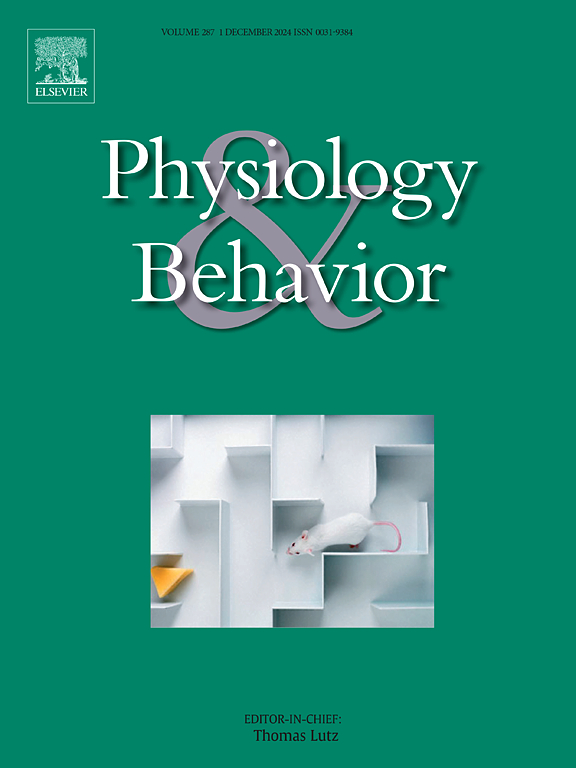分开还是不可分割?血清素和多巴胺系统的相互作用可能是裸盖菇素治疗神经性厌食症的潜在基础
IF 2.5
3区 医学
Q2 BEHAVIORAL SCIENCES
引用次数: 0
摘要
裸盖菇素是一种能产生5 -羟色胺的致幻剂,已经成为治疗包括神经性厌食症在内的一系列精神疾病的一种很有前景的药物。动物模型和人体成像研究的最新发现表明,裸盖菇素增强了认知灵活性,并改变了奖励处理过程——这是神经性厌食症中被破坏的两个核心过程。认知灵活性和奖励处理都高度依赖于大脑关键区域(如前额皮质和伏隔核)中5-羟色胺(5-HT)和多巴胺(DA)系统之间的相互作用。裸盖菇素对神经可塑性的影响,特别是在促进神经回路的结构和功能变化方面,巩固了其治疗潜力。虽然其作用主要归因于5-HT2A受体亚型的活性,但最近的证据表明,更广泛的大脑受体相互作用网络,特别是那些具有多巴胺能通路的网络,起着至关重要的作用。利用啮齿动物模型进行的研究表明,裸盖菇素可诱导快速和持久的神经可塑性变化,通过这些复杂的神经化学机制提高认知灵活性。实时体内神经化学记录的进步现在允许同时监测5-HT和DA信号,这将为认知表现中它们独特和协调的行为提供必要的见解。这一综合框架强调需要进一步研究裸盖菇素对5-羟色胺和多巴胺系统的双重调节,以优化其治疗神经性厌食症的应用。神经性厌食症是一种危及生命的疾病,其特征是认知灵活性和奖励处理受损。本文章由计算机程序翻译,如有差异,请以英文原文为准。

Separate or inseparable? Serotonin and dopamine system interactions may underlie the therapeutic potential of psilocybin for anorexia nervosa
Psilocybin, a serotonergic psychedelic, has emerged as a promising treatment for a range of mental health conditions, including anorexia nervosa. Recent insights from animal models and human imaging studies suggest psilocybin enhances cognitive flexibility and modifies reward processing – two core processes disrupted in anorexia nervosa. Both cognitive flexibility and reward processing are highly dependent on interactions between serotonin (5-HT) and dopamine (DA) systems in key brain regions such as the prefrontal cortex and nucleus accumbens. Psilocybin’s influence on neuroplasticity, particularly in promoting structural and functional changes in neural circuits, underpins its therapeutic potential. While its effects are predominantly attributed to activity of the 5-HT2A receptor subtype, recent evidence suggests a broader network of brain receptor interactions, particularly those with dopaminergic pathways, plays a crucial role. Investigations using rodent models reveal that psilocybin induces both rapid and enduring neuroplastic changes, improving cognitive flexibility through these complex neurochemical mechanisms. Advances in real-time in vivo neurochemical recording now allow simultaneous monitoring of 5-HT and DA signalling, which will provide essential insights into their distinct and coordinated actions during cognitive performance. This integrative framework highlights the need for further research into psilocybin’s dual modulation of 5-HT and DA systems to optimize its therapeutic applications for anorexia nervosa, a life-threatening condition that is characterized by impairments in cognitive flexibility and reward processing.
求助全文
通过发布文献求助,成功后即可免费获取论文全文。
去求助
来源期刊

Physiology & Behavior
医学-行为科学
CiteScore
5.70
自引率
3.40%
发文量
274
审稿时长
47 days
期刊介绍:
Physiology & Behavior is aimed at the causal physiological mechanisms of behavior and its modulation by environmental factors. The journal invites original reports in the broad area of behavioral and cognitive neuroscience, in which at least one variable is physiological and the primary emphasis and theoretical context are behavioral. The range of subjects includes behavioral neuroendocrinology, psychoneuroimmunology, learning and memory, ingestion, social behavior, and studies related to the mechanisms of psychopathology. Contemporary reviews and theoretical articles are welcomed and the Editors invite such proposals from interested authors.
 求助内容:
求助内容: 应助结果提醒方式:
应助结果提醒方式:


